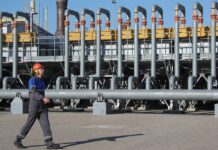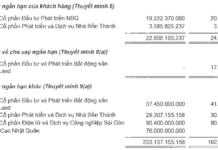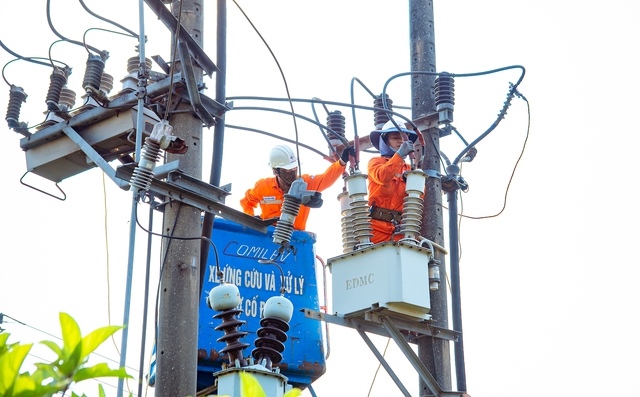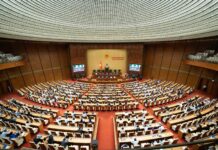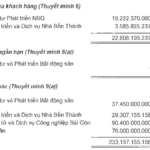At the Ministry of Industry and Trade’s regular press conference for the second quarter, held in June, Deputy Minister of Industry and Trade Nguyen Sinh Nhat Tan affirmed that electricity prices are not only subject to increase but also decrease.
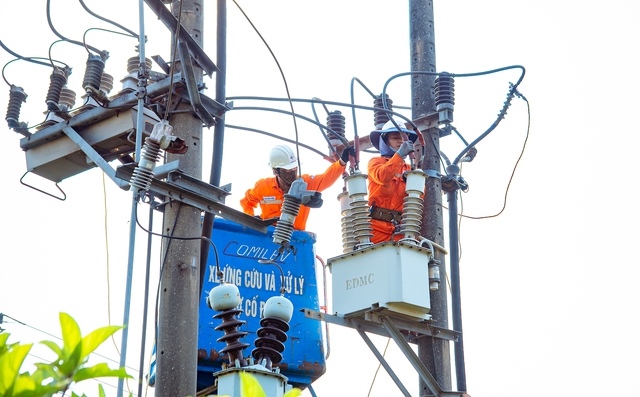
Reducing electricity prices is becoming more challenging. Image: EVN |
According to the Deputy Minister of Industry and Trade, adjustments to electricity prices must follow Decision 05 of the Prime Minister, effective from May 15, 2024. Accordingly, if there is a 1% reduction in input costs and a sufficient basis, electricity prices will be lowered immediately.
However, recent reports of the Vietnam Electricity Group (EVN)’s increasing losses, including instances of selling electricity below production costs, have heightened concerns about potential electricity price hikes.
Meanwhile, EVN’s report showed that in the first seven months of 2024, hydropower generation reached 40.9 billion kWh, accounting for only 22.8%. This figure is 1% lower than the same period last year in market share, despite higher water levels in the northern hydro reservoirs this year.
Hydropower is a low-cost form of electricity, with production costs lower than the selling price to consumers. In contrast, electricity generation from more expensive sources accounts for a large proportion, with coal-fired power at 53.7% and turbine gas at 8.2%…
Worryingly, in a recent discussion on breakthroughs to attract investment in the electricity sector, energy economics expert, PGS-TS Bui Xuan Hoi, stated that the source of electricity, despite best efforts, cannot ignore baseload power, including coal and gas-fired power.
“No matter how much renewable energy is incorporated, baseload power remains crucial. With the current trend of increasing input fuel prices, I believe that the cost of electricity supply will definitely increase. Given the geopolitical situation, we cannot expect input prices to drop immediately and may even stabilize at a new, higher level. We have to accept this” – Mr. Hoi stated.
Additionally, as Vietnam aspires to achieve Net Zero by 2050, and other countries strive for cleaner energy, PGS-TS Bui Xuan Hoi affirmed that there is no such thing as cheap clean energy.
“Solar power can generate a maximum of four hours a day, and wind power is inconsistent, so these sources cannot be expected to provide cheap electricity” – PGS-TS Hoi emphasized.
Thuy Linh
General Tô Ân Xô: Seizing multiple accounts, properties in the Xuyên Việt Oil case
The investigative agency remains determined to expedite the case, with a resolute and fierce spirit, without any prohibited areas, without exceptions.
Prime Minister: State-owned enterprises holding substantial resources need to be profitable
On the morning of February 5th, Prime Minister Pham Minh Chinh emphasized the importance of profitable operations and increased contributions to GDP growth and the state budget by working with 19 conglomerates and state-owned enterprises. These businesses possess significant resources and must strive to generate more profits.
Sharp Decline in Consumption, Warning of Very Low Water Levels in Hydropower Reservoirs
The Ministry of Industry and Trade’s Electricity Regulatory Authority has announced that electricity consumption during the Lunar New Year holiday is significantly low nationwide. In light of the low water levels in the hydropower reservoirs in the northern region, coal-fired and renewable energy power plants have been maximally utilized.



